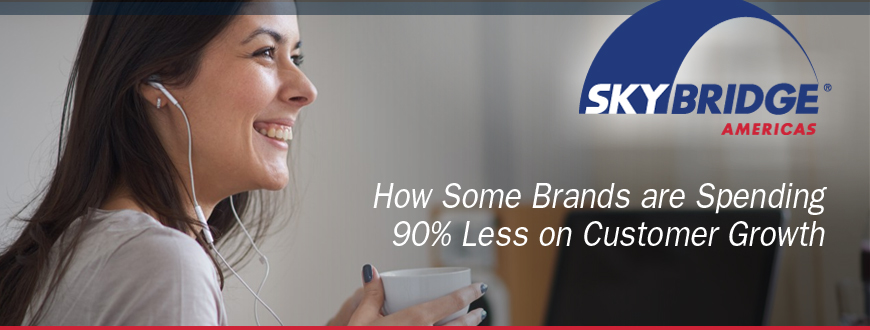
The events of the past year caused dramatic disruptions in consumer behaviors. While many were obvious and, potentially, short-term, other changes were a lot tougher for brands to notice or easily understand.
When brick-and-mortar retailers were forced close their doors, for example, retailers understood that their sales – and customer retention – depended on their ability to shift quickly to online ordering, curbside pick-ups, and/or home delivery.
But other changes were far less obvious, coming to light only recently, as a growing number of consumer studies have been published. One enormous change that got missed by many: higher levels of consumer vulnerability, impatience, and need for a “human connection” with the brands they patronized. More significantly, each time these needs and expectations went unmet, consumers increasingly turned online, seeking new brands (or brands new to them) in hopes of feeling treated better.
Often, the brands to which they were once loyal were the last ones to know they’d left. According to a recent study by Coveo, fewer than 44% of consumers will directly complain to a company that disappoints them.
Why? Because giving that feedback would take more effort than they’re willing to make.
You can read more details and data in this recent Retail Dive article by Maria Monteros. As you do, one warning will likely jump out at you: when vast numbers of your customers decide that moving their business would actually be less stressful than telling you when you’ve let them down, you’ve got a retention problem. At least, that’s how I’m interpreting these recent Coveo results. And that is certainly consistent with our experience at Skybridge Americas: today, more than ever, consumers want more than efficient, accurate answers. They want to feel heard, cared for, and valued.
At Skybridge Americas, we specialize in providing superior customer experiences, improving satisfaction, loyalty, and profitability. If you would like to learn more about how we can help your brand win back and win over your customers, please reach out. We would love to talk!
Consumers set a high customer service bar, but not every brand can deliver
The customer may not always be right, but experts say there’s a price to pay when brands don’t take care of them.
Greeters stand by entrances next to hand sanitizer stations offering disposable masks to customers. Signs around stores encourage shoppers to wear a mask, avoid sampling products and stay six feet apart. Outside, customers are assigned designated parking spots for pickup services.
About a year into the pandemic, retail stores across the country have made adjustments to create a customer shopping experience vastly different from what it was at the start of 2020.
Customers have adjusted their purchasing habits too. As illustrated on Black Friday, consumers spent around $9 billion shopping online, a 21.6% year-over-year increase since 2019, Adobe Analytics said. Meanwhile, foot traffic in physical stores dwindled 52.1% from the previous year, data from Sensormatic Solutions indicated.
Some retailers have accelerated the rollout of services like curbside pickup and BOPIS in response to the changes in consumers’ shopping habits. CommerceHub found that 59% of shoppers are more likely to use curbside pickup due to the pandemic, and Adobe Analytics found that orders fulfilled through BOPIS surged 208% last April. Post-holiday, the surge dialed back, but it remains 67% higher in February 2021 than last year.
Businesses that are typically more cautious have accelerated their digital transformation projects and are now more open to testing ways to fulfill orders “because they knew what was on the line,” said Manolo Almagro, managing partner for Q Division. But as consumers begin to expect more, retailers are left having to respond to problems they may not have the capabilities to solve.
“During the COVID times, we all kind of raised the bar on our expectations because e-commerce made it a lot easier to do things, and made it faster.”
Manolo Almagro
Managing Partner, Q Division.
“During the COVID times, we all kind of raised the bar on our expectations because e-commerce made it a lot easier to do things, and made it faster,” said Almagro. “But when you still get to that fulfillment side, logistically, it’s not there yet, or it has to be addressed.”
With the introduction of these new digital services, making purchases is as easy as a few taps and swipes for consumers. And as more retailers provide faster fulfillment options, the pandemic has set a new standard for customer expectations, said Almagro.
“What we’ve seen is people’s or customer [patience] levels are much lower,” Almagro said, adding that unsatisfied customers will quickly move on to a different retailer if their needs aren’t met. “You’re battling for the loyalty.”
Read the complete article here >
-Bobby Matthews
Senior Vice President, Sales and Marketing
Skybridge Americas
bmatthews@skybridgeamericas.com
Find out how Skybridge Americas can help you delight your customers and grow your business.
We seamlessly integrate our superior customer care skills with your brand messaging. For more information, contact us at 763-299-4570 or submit our contact form.

